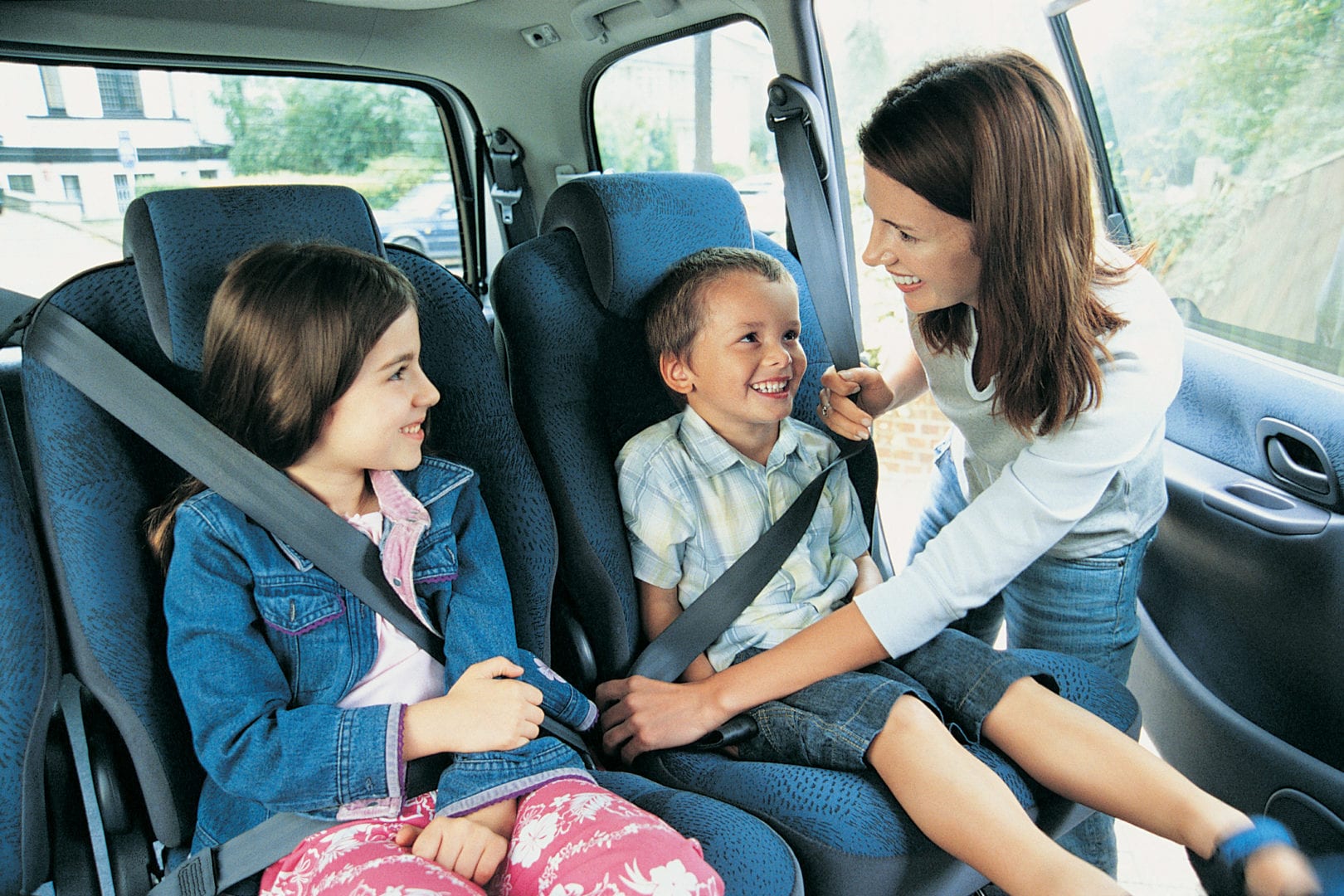As I race (late, as always) to the gate to pick up my twins from school, I see them again — the small groups of kids who aren’t siblings climbing happily into an ever-rotating group of SUVs as they carpool home. And once again I wonder, “How do I get in on that?”
As a busy parent, it feels like I’m always struggling to make sure the kids are dropped off and picked up from school and their various activities on time. The idea of having another family (or even a few) to share the task would be magical. I’ve had chats with other parents about starting a carpool, and we’ve even given it a try, but it never seems to last longer than a couple months at best.
Early dismissals are a curveball for working parents, and I’ve been in situations where the carpool decides to fend for themselves on these days. When these dreaded half days fall right before a long weekend or holiday break, it’s easy to let the carpool fall by the wayside once school starts back up again. Once my family took a couple days away for a trip, and I didn’t know how to reach out and get going again once we got back without feeling like I let them down. There has to be a better way.
So we asked real parents and experts for their tips on how to get a successful carpool up and running and keep it lasting. Turns out, the key to a successful carpool is having a clear idea of what your carpool needs are and a solid plan on how to execute them. They also shared some simple tech hacks and some practical concerns to consider. (Like, how long do kids need to be in a booster seat anyway?)
Here’s how to start a kid carpool that works — meaning, one that earns you a little more freedom in your week!
1. Find the perfect carpool candidates
Reach out to other parents
Chat with other parents at school drop-off or when bringing kids to and from after-school activities to gauge interest in a carpool. You might even find an existing carpool to join.
Use social media
Post your carpool needs in a local Facebook group or neighborhood Nextdoor community to locate families close by who are also looking to form a carpool.
Look to families with compatible schedules first
Your child might love the idea of riding back and forth from school every day with their bestie who lives all the way across town, but mom Sharon Somekh, M.D., and founder of Raiseology.com, of Roslyn, New York, says it’s important to remember that a carpool’s ultimate purpose is about making a parent’s life easier.
Somekh encourages parents not to get caught up in coordinating carpool kids around age or gender.
“I try to think of carpooling as a way of making life more manageable and convenient rather than as a social event,” the mom of four says.
2. Pick the right number of kids for your carpool
Keep it manageable
More isn’t always better. Mary Beth Foster, a mom of two from Mont Hill, North Carolina, says it’s important to consider the different ages and developmental needs of all children when forming a carpool. Make sure you’ll be able to handle the number and types of kids you sign up for.
Carpools with younger kids should be smaller
When Foster started carpooling with one other child to her daughter’s preschool, getting two 2-year-olds out of the car and into the classroom was a challenge.
“They both had to be helped in and out of the car; they needed assistance with their car seat buckles and backpacks and coats,” she says. “I don’t think I could have managed any more at that age!”
Expand your carpool when kids are older
As kids get more independent, it’s easier to add to the roster. Rebecca F., mom to a sixth-grader from Seattle, Washington, says as long as there’s space in the car and the parents are willing to communicate, there’s no limit to how big her carpool of middle schoolers can be.
3. Organize the parent drivers
Make a schedule
Set up a time — whether it’s over a cup of coffee or a quick meetup in the school parking lot — to go over the transport schedule with the other parents and lay out a basic schedule of who will drive when.
Get everyone’s contact information
Exchange all the parents’ (and kids’, if necessary) pertinent phone numbers. Being able to reach every family in the carpool easily is a huge help when the unexpected happens. Like recently, Rebecca F. says, a dad got stuck at work and texted her group to let the other parents know he wouldn’t be able to do pickup.
“It does require a little bit of coordinating,” she says. “But even when things come out of the blue, it’s been really nice to know there are multiple parents willing to jump in and get things done and get the kids home safely.”
Plan for the unexpected
“Planning is key,” says Rebecca F.
Try to come up with backup plans or alternate drivers for days when a child is sick or a parent has to work late and can’t do their portion of the carpool that day.
Pick a point person
Rebecca F. also suggests selecting one parent to touch base with the others at the start of the week to nail down the schedule and address any necessary changes.
Start a carpool Facebook group and/or group SMS
The hardest part of any carpool is keeping it going amidst everyone’s ever-changing, busy schedules. Rebecca F. uses a Facebook group to help manage her son’s carpool of eight families.
Foster credits constant text messages as the trick to keeping her two-family preschool carpool running smoothly. Here’s how she uses texting to keep their carpool running efficiently:
- The parent driving texts the other parent as they pull out of their own driveway in the morning, giving the other parent time to help their child put on shoes and coat.
- The driving parent also texts when they arrive at the house, so parents can help load kids in car seats or out at the end of the day.
- The driving parent sends a quick text when the kids arrive at school, too, so all parents know that drop-off went smoothly.
Try a carpool management app
Apps like Carpool Kids and GoKid help make it easier to create a group driving schedule and communicate with other parents.
4. Consider all aspects of safety
Get to know the adults who will be driving
Somekh urges parents not to hold back when asking questions about other drivers in the carpool. Ask about driving history, past accidents and the reliability of their vehicle. You might already know your friends and neighbors fairly well, but asking can bring extra peace of mind and reveal things you may not know.
“Think of the questions you want to ask and whether or not those questions would offend you,” Somekh says. “Most likely a like-minded parent would want to know the same things about you and won’t be upset at all by any inquiries.”
If something feels off, trust your gut
“I, myself, have been in situations where I didn’t feel comfortable with other drivers and have opted not to participate,” Somekh says.
Know and adhere to car seat and seatbelt laws
Before starting a carpool, familiarize yourself with your state’s car seat laws, as well as the age, height and weight of any children you’ll be transporting. Don’t transport other kids without asking if they need a car seat or booster, and always enforce seat belt use for older kids.
If your child has reached the minimum age to sit without a booster (age 8 in some states), but you’d still like them to be in one because of their height or weight, Somekh says it’s important to communicate this to other parents and offer to buy or provide an extra if necessary.
Always practice safety in the car
Driving a bunch of kids in one car can be distracting, but do stay focused on the road.
“I don’t pick up things you drop while I’m driving,” Foster says. “I say I’ll see if I can reach it when we get to a red light.”
Check your insurance policy
No one wants to think about their children being in a car accident, but being prepared is always a smart move. Topher McGibbon, owner of Kid Car, a NYC-based child transportation company, recommends parents take a look at their car insurance policy to see if there are any clauses related to driving others before regularly driving other’s children around town.
“I would suggest to parents that they actually consider getting supplemental insurance or call the [insurance] company and preemptively let them know what they’re planning on doing so, so it’s not an issue in the case that something happens,” McGibbon says.
5. Set car rules for the kids
Consider these ground rules to make carpooling easier.
- Seating. Having rules and reminders about who sits in which seat and when they take turns helps keep kid conflicts to a minimum, says Rebecca F.
- Music. It’s good to let the kids know how playing music, if any, will be handled in the car. “Kids don’t get to make song requests in my car; I pick the music,” Foster says.
- Lovies on board. Decide if you want to allow toys or security blankets/objects in the car. “For a long time, we didn’t have ‘soft guys’ in the car because it was too hard for them to share or understand that their friend brought a soft guy and they didn’t have one,” Foster says.
- In-car dining. Decide if you want kids eating in your car. If you’re open to it, be sure to note any allergies of kids in the carpool, so parents can plan snacks accordingly.
- Special events. If you want to go above and beyond, you can plan fun things for the kids to look forward to during the ride, especially if they make the drive easier on you. For instance, instead of trying to calm down kids who are pumped for the upcoming weekend, Foster’s carpool does Film Fridays, where the children look forward to watching a movie in the afternoon.
- Noise factor. Ensure the noise on board doesn’t get in the way of safe driving. But Rebecca F. says she tries to remember that when kids make noise in the car, they’re just being kids. “I just let them go,” she says. “It’s interesting to hear what they talk about in the mornings.”
6. Know these carpool no-nos
Also, keep these general etiquette rules in mind.
- Don’t let anyone outside the carpool cover your leg of the journey. It might be convenient to have a grandparent or babysitter grab the kids one day, but unless every parent is aware and OK with it, it should be a no-go.
- Don’t be late. Whether you’re the carpool driver or the parent getting your kid ready for pickup, don’t make a habit of running late. You’re holding up everyone when you do this, including other parents.
- Don’t ask other parents to do your dirty work. So sorry your kid forgot his cleats or left his backpack at his dad’s house, but these errands are not the responsibility of other carpool parents.





